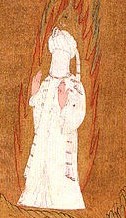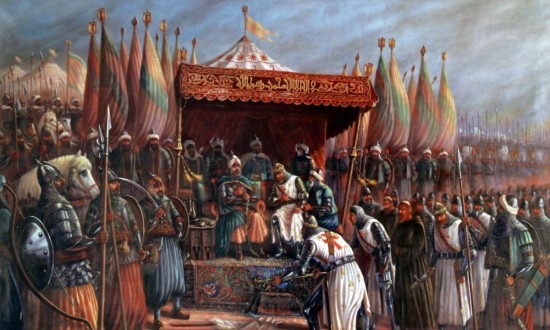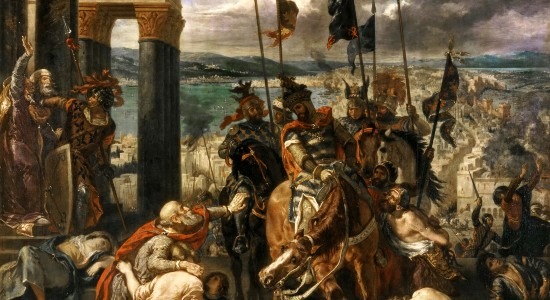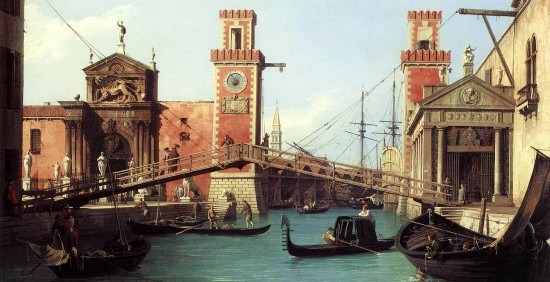MedievalReporter.com
Covering history's most marvelous millennium
Join our newsletter!

Covering history's most marvelous millennium
Covering history's most marvelous millennium
The Crusades were a major military episode of the High Middle Ages. Thousands of European christians vowed to reconquer the Holy Land from its “infidel” muslim masters. Not every Crusade ended up in the Orient. One targeted the Byzantine Empire. Other expeditions went to Tunisia or the pagan lands of the Baltic. However, all campaigns were part of a violent explosion of christian militarism.
Western Europe started opening up with the wider world. With the Crusades, it left its first major mark on intercontinental history.
This is a short intro from our Medieval Guidebook. Dive deeper into the subject by reading our articles about it.

During its stellar ascent in the 7th century CE, Islamic forces conquered the medieval Orient - i.e., the Asian and African coastlines of the Mediterrean Sea. Under command of Muhammad’s official successor, the caliph, they overran the Byzantine (or Eastern Roman) provinces here. The city of Jerusalem fell after a siege of six months.
Life under the caliph was pretty good for most jews and christians. As fellow People of the Book, early Islam was very tolerant of them. The caliphate went to great lengths to protect christian pilgrims still pouring into Jerusalem after the muslim conquest of the city.
During the 10th century, the power of the caliph started to decline. Mercenary Turks entered the Near East in great numbers and set up the Seljuq Empire in the Orient. Incidents with pilgrims started to occur, as Seljuqs harassed and robbed Europeans making their way to Jerusalem.
The Turks also inflicted further defeats on the Byzantine Empire - still a major power in the region. When the Byzantine emperor asked the West for help against the Turks, his plea was greeted with enthusiasm by christians seeking revenge. After a rousing speech by the pope, many commoners and knights “took the cross”: they vowed to wage holy war against Islam and reconquer Jerusalem.

Most historians distinguish eight major Crusades that projected the military power of Latin Christianity across the Mediterranean.

The list above only covers Crusades that meant to bring the Orient back under christian control. However, the Crusades soon expanded to other theaters. Major expeditions were launched against the Baltic region, against fellow christians in southern France, and against muslims in Spain - to name but a few.

- advertisement -
- article continues below -
The Crusades brought Western Europe in contact with the wider world. Answering the Byzantine plea for help propelled many Europeans into the politics and commerce of the medieval Orient. And, as the western ends of the Silk Road were located in Baghdad, Damascus and Constantinople, there was much commerce to be conducted.
Relations between the Crusaders and the Byzantine Empire soured during the First Crusade. Consequently, the Italian city-states transported much of the subsequent expeditions overseas. Never turning a blind eye to commercial interests, a lot of Italian merchants thus came into contact with the wealth of the Orient. The new Crusader states were in the perfect position to forge new trade links between East and West.
It has been argued that the Crusades were a politically and economically motivated series of campaigns just like any other military expedition. While there were certainly great opportunities in the Holy Land, we should not underestimate the religiousness of medieval life. Many participants of the Crusades - especially of the first one - thought they embarked on a holy war.
It’s precisely this militant extremism that produced the ugly side of the Crusades’ legacy. Outside of the oriental theater, the idea expanded to other regions and sometimes became genocidal in nature. Holy war casts reality in such black-and-white terms that it allows for very unholy deeds.

Disclosure: we work hard to provide you with exclusive medieval reports and guides. To make the Middle Ages accessible to everybody, we’d like this information to remain FREE. Therefore, some of the links below are affiliate links, meaning – at no additional cost to you – we will earn a small compensation if you click through.
Grab a short intro on another conflict from our Medieval Guidebook.